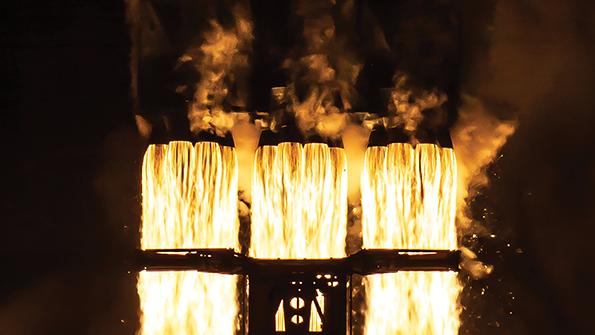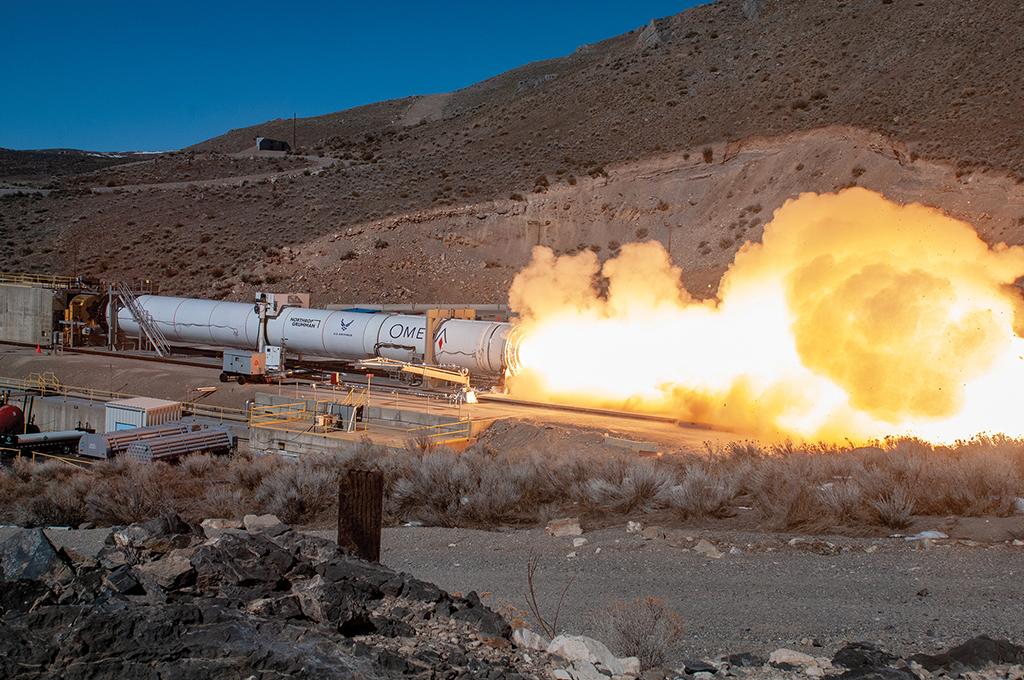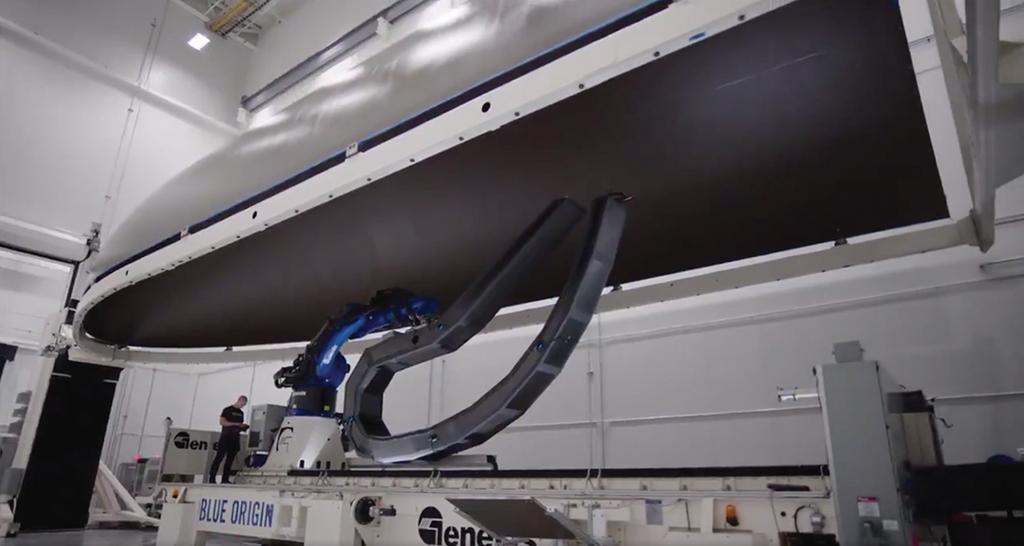
United Launch Alliance (ULA) CEO Tory Bruno is keen on competition, even if that means losing a government contract every now and then, as happened in February when NASA chose a SpaceX Falcon Heavy to launch a science probe to the metal asteroid Psyche in 2022 for $117 million.
ULA had offered Psyche mission launch services aboard its workhorse Atlas V for an undisclosed price. “Can’t win them all,” Bruno tells Aviation Week. “We win about half, but that’s OK. That’s how competition is supposed to work.
“It’s healthy for the government. It’s healthy for the industry . . . because we try to be as efficient as we can and to differentiate ourselves, which ultimately usually results in more value for the customer, either in capabilities or in prices,” he adds.
- Falcon rockets are sole heritage offering
- ULA business based on winning its bid
Bruno’s mettle is being put to the test. This summer, a heated two-year competition to provide national security space launch (NSSL) services through 2027 concludes with the U.S. Air Force deciding whether to retain incumbents ULA and SpaceX or replace one or both with Northrop Grumman and/or Blue Origin.
The Air Force Space and Missile Systems Center, in partnership with the National Reconnaissance Office, plans to award firm fixed-price, indefinite-delivery contracts to two domestic launch service providers for procurements in fiscal 2020-24, with work split 60/40%.
The NSSL Phase 2 Launch Service Procurement (LSP)—the first such solicitation since 2005—is designed to end dependence on Russian rocket engines for national security space launches, reduce launch costs and spur competition for current and future national security space launches.
Unlike its competitors, ULA’s business plan rests on winning a Phase 2 award. “We have an entire business plan that presumes we are going to win Phase 2,” Bruno said during a March 10 media roundtable at the Satellite 2020 conference in Washington.
If ULA does not win, he added, “We’d have to go evaluate that.”
Based on satellite orders compiled by several industry association surveys, Bruno figures there is enough business for two domestic medium-to-heavy-lift launch service providers, and he is confident ULA will be one of them.
“There isn’t much rocket science to this,” Bruno said. “The launch service provider is at the end of a 5-7-year-long chain. It’s going to be about 30-35 launches a year for the next several years,” he said during a March 11 panel session at the conference. “We all need about 8-12 launches a year, at least, to be a sustainable, viable business. That makes room for four [launch service providers].
“The Russians will always have one—it is state-sponsored—they will make sure. Ariane will always exist, the Europeans will make sure. That leaves two for the U.S. because we want to ensure space access via two providers. So that is the right number, and that’s why the Air Force will select two very shortly this summer,” Bruno says.
The SpaceX View
SpaceX looks at the launch market pie with a different eye. First, the company expects more than half of its projected 35-38 Falcon launches this year to carry Starlink satellites manufactured, owned and operated by SpaceX into low Earth orbit (LEO), a project intended to provide global high-speed, low-latency internet service.

SpaceX’s sixth batch of 60 Starlinks reached orbit on March 18, bringing the constellation head count to about 360. When that number doubles, SpaceX expects to be able to provide seamless internet coverage covering latitudes about 25 deg. north and south of the equator.
After 24 launches, with approximately 1,440 Starlinks in orbit, the network will be capable of full global coverage, according to SpaceX President and Chief Operating Officer Gwynne Shotwell.
Ultimately, SpaceX plans to operate approximately 12,000 satellites, with a possible expansion to 42,000. The company is still working with the International Telecommunication Union for spectrum allocation and with individual countries for permission to transmit data to and from non-U.S. territories.
Starlink’s raison d’etre is to bring in enough revenue to carry out the space colonization dream of tech entrepreneur Elon Musk, who founded SpaceX in 2002 with the goal of creating technologies for interplanetary transportation, with a particular eye on Mars.
Toward that end Musk, who also serves as SpaceX CEO and chief engineer, is focused on developing the Starship, a two-stage, fully reusable transportation system capable of placing 110 tons (100 metric tons) into LEO. By comparison, the 1960s-era single-use Saturn V Moon rocket could put 154 tons into LEO.
SpaceX is counting on revenue from the Starlink constellation to fast-track Starship development. Flying cargo and crew to the International Space Station and launching commercial and government satellites on the existing Falcon 9 and Falcon Heavy fleet can bring in up to $3 billion a year, Musk said during a March 9 keynote address at Satellite 2020.
Providing broadband should generate an order of magnitude more revenue, probably about $30 billion a year—a fraction of the current $2.8 trillion value of the telecommunications industry, Musk says. “Starlink is not some huge threat to telcos. In fact, it will be helpful to telcos because Starlink will serve the hardest-to-serve customers that telcos otherwise have problems with,” using landlines or cellphone towers, he adds.
Shotwell says that even without Starlink, SpaceX is profitable. “Starlink is additive to our business,” she told reporters during a media roundtable in October. “We make money on the core business of SpaceX, which is Falcon 9, Falcon Heavy and Dragons.
“We could do Starship just on our own operating income, on our revenue, if we were to spread it out over time,” she added. “But Elon wants to get things done quickly, and so we’re spending a lot of money on advancing Starship and Starlink. SpaceX does not need Starlink to be a healthy business.”
In support of Phase 2, SpaceX has unveiled plans for a movable tower at its Falcon launch base at NASA’s Kennedy Space Center in Florida. The 284-ft.-tall gantry features 11 floors and doors to shield Falcon 9 and Falcon Heavy rockets from rain and wind, while providing a controlled environment to hoist payloads on top of the vehicles as they stand vertically at the pad.
SpaceX currently installs payloads horizontally inside hangars near its three launchpads. Some of the national security missions, however, require vertical integration. SpaceX also is working to qualify a longer payload shroud, which likewise is required for some NSSL missions.
Starry-eyed
SpaceX’s passion for the Starship, previously known as the Big Falcon Rocket, caused a rare misstep in the company’s quest for U.S. government launch contracts when it included a small role for the megabooster in its LSP developmental Launch Service Agreements (LSA) proposal, a precursor to the ongoing competition for launch services.
In 2018, the Air Force awarded three LSA contracts, collectively worth about $2 billion, to ULA, Northrop Grumman and Blue Origin to help defray the costs of developing launch-system prototypes aimed at fulfilling various national security payload delivery requirements.

SpaceX’s LSA bid included use of the Starship for launch of some of the heaviest payloads and most challenging missions in 2025 and beyond, a scenario the Air Force deemed “high-risk.” SpaceX responded in May 2019 with a federal lawsuit, challenging the Air Force’s procurement process.
The lawsuit is under consideration in U.S. District Court for the Central District of California. An LSA award was not necessary for companies to compete for the LSP Phase 2 program.
Ironically, iconoclastic SpaceX, which previously sued the Air Force to speed up the breakup of ULA’s 2006-16 monopoly on national security space launch services, is the only Phase 2 contender offering an existing and certified family of launchers. The company, which publishes base pricing on its website, has not disclosed what it would charge for NSSL missions, but SpaceX is well-known for undercutting its competition.
Ten years ago, Iridium shopped for launch services to put its next-generation network of 75 communications satellites into orbit. It signed with SpaceX, which at the time was preparing for the first flight of the Falcon 9.
SpaceX’s bid for the Iridium Next launch campaign—which consisted of eight flights from January 2017 to January 2019 from Vandenberg AFB in California—was $500 million. “My next price from there was $1.2 billion to launch the same 75 satellites,” says Iridium CEO Matt Desch. “Thank God for SpaceX . . . . I’m not sure I could have afforded the second-best price.”
Six years later, SpaceX broke ULA’s monopoly on the Air Force’s launch business with an $83 million winning bid to fly a GPS 3 satellite, undercutting the government’s cost estimate, based on previous GPS launches by ULA, by about 40%, the Space and Missile Systems Center said at the time.
Price and performance may tip the scales in SpaceX’s favor for the upcoming Phase 2 LSP awards. With its March 18 launch, SpaceX has carried out 83 Falcon 9 missions, with one inflight failure and one accident during a prelaunch static test fire that cost another booster and payload. The Falcon Heavy has flown three times, all successfully.
The Rocket That Scrum Built
One company hoping to wrest the NSSL business away from the incumbents is Northrop Grumman, which presents a very different view of launch market viability. “The Air Force’s intent from the beginning is to make sure that our business case didn’t depend on them with large numbers of launches,” says Northrop’s Charlie Precourt, vice president of propulsion systems.
“We’re not a launch vehicle searching for lots of different payloads,” he adds. “We’re a launch vehicle that is built on existing manufacturing lines, facilities and workforce infrastructure.”
Northrop’s Phase 2 offering, the Omega, can close its business case with just 3-4 launches per year, far below ULA’s estimate of what it takes to sustain a viable medium- to heavy-lift launch service program.
Northrop is heavily leveraging investments and existing work for NASA and the defense community to develop the Omega, a family of two-stage, solid-propellant boosters topped with an Aerojet Rocketdyne RL10 upper stage. ULA also is using an RL10 for the upper stage of the Vulcan.
“The core of the Omega rocket is in form, fit and function the same as a segment of the SLS [Space Launch System] booster,” says Precourt. “What we’re doing is a little bit different than what a launch vehicle company would normally do, which is to pursue lots of different payload customers. We meet that business need for the Air Force in a different way.”
But the Omega also is a departure from Northrop’s current programs, which include the five-segment solid-rocket motors for NASA’s SLS, the air-launched Pegasus booster, the Minotaur and Antares. Northrop used an agile development system called scrum—initially developed by teams to write software in sprints—to design and manufacture the Omega.
“We like to call Omega the rocket that scrum built,” says Precourt. “Scrum is about moving faster, how to innovate to go faster and do more in less time.”
Between the May 2019 and February 2020 static test firings of the Omega’s first and second stages in Promontory, Utah, engineers used scrum methodologies to apply lessons learned, such as determining what the environments were like inside the motor and how it behaves when fired, Precourt says.
Both static firings were successful, completing full-scale engine testings planned prior to the Omega’s debut launch in 2021.
However, the May test, during which the Omega’s two 31-ft. solid-propellant rocket motors were ignited, ended with the booster’s 18-ft.-long nozzle breaking apart, a function of atmospheric conditions during testing and not an issue for certification or flight, Northrop says.
“The nozzle was just one part of the design we analyzed. Our engineers ran in sprints, with the customer as part of the team, to assess data, anchor models and optimize the design,” says Precourt. “By taking a little extra time between the two tests and utilizing scrum, we were able to fully test design improvements without any impact to our launch-readiness date. We’re deploying scrum more broadly across the plant as we go.”
Under terms of Northrop’s $792 million LSA agreement, awarded in 2018 for Omega development and certification work, the company plans to conduct two more full-duration static tests of the first and second stages after the Omega’s first two flights, which will be used to certify the booster for national space security missions.
Northrop is developing the Omega primarily to provide launch services to the Air Force, but it is also offering the rocket commercially. In December, the company announced it had a customer for the Omega’s first flight, one of two missions required prior to flying high-value national security payloads.
The debut mission will carry one or two Saturn NationSat geostationary communications satellites. Northrop said it is “converging on an agreement” with a customer for the Omega’s second flight, which is expected to launch next summer, says spokeswoman Jennifer Bowman.
Winning a follow-on Phase 2 contract is a high priority for Northrop. “We’ve been working really hard on that,” Precourt tells Aviation Week “Northrop as an entire company is focused on national security space.
“We do threat assessment, mission planning, mission control and operations, satellite design and manufacturing [and] direct support of information to the warfighter,” he says. “Launch is a piece of that full-value stream of delivering to the warfighter, so NSSL fits right into the DNA of the company. We’re really determined to deliver for the Air Force.”
As to what it will take to dethrone an incumbent, Precourt says it is not that unusual: “It all comes down to who is best-prepared and best meets the need. That’s what we’re working hard to do.”
Getting a Toehold
Among the four contenders for the Air Force’s launch business, Blue Origin’s New Glenn offering may be the longest-shot, but even if it does not win a Phase 2 contract, it fully expects to be a key part of the team. That is because the company’s BE-4 engines will power the first stages of both ULA’s Vulcan rocket and Blue’s New Glenn.
Company founder Jeff Bezos has invested $2.5 billion in the New Glenn, including a new $200 million, 350,000-ft.2 factory and office complex in Huntsville, Alabama, where BE-4 engines and the New Glenn’s BE-3U upper stages will be manufactured.

Blue Origin also is expanding New Glenn manufacturing facilities adjacent to Kennedy Space Center. In March, the normally low-profile company displayed videos of the New Glenn’s newly completed mission control center, a first-stage fuel tank, which is the rocket’s largest structure, and the first completed 23-ft.-long payload fairing.
At nearby Cape Canaveral AFS, a launch complex for the New Glenn is under construction, with the booster’s debut expected in late 2021.
Like SpaceX and Northrop, Blue Origin’s future does not hinge on winning a Phase 2 contract. The company won LSA funding, which it says it is using to cover NSSL certification costs and program requirements to develop a West Coast launch site for polar orbits.
Blue Origin has signed New Glenn launch contracts with at least five customers—Eutelsat, mμ Space Corp. of Thailand, Sky Perfect JSAT, OneWeb and Telesat—several of which are buying multiple flights.
Powered by seven BE-4 engines on its reusable first stage, the New Glenn is designed to carry nearly 50 tons to LEO. “And that is the smallest orbital vehicle we are planning to build and launch,” says Clay Mowry, Blue Origin vice president of sales, marketing and customer experience.
Like SpaceX’s Musk, Bezos aims to parlay his company’s space transportation technology into a future that more closely resembles the science fiction novels both men hold dear. Bezos’ vision is for millions of people to be living and working off Earth.
ULA and Northrop, meanwhile, seek only to serve the national security mission.
The Air Force has never had such ripe pickings.





